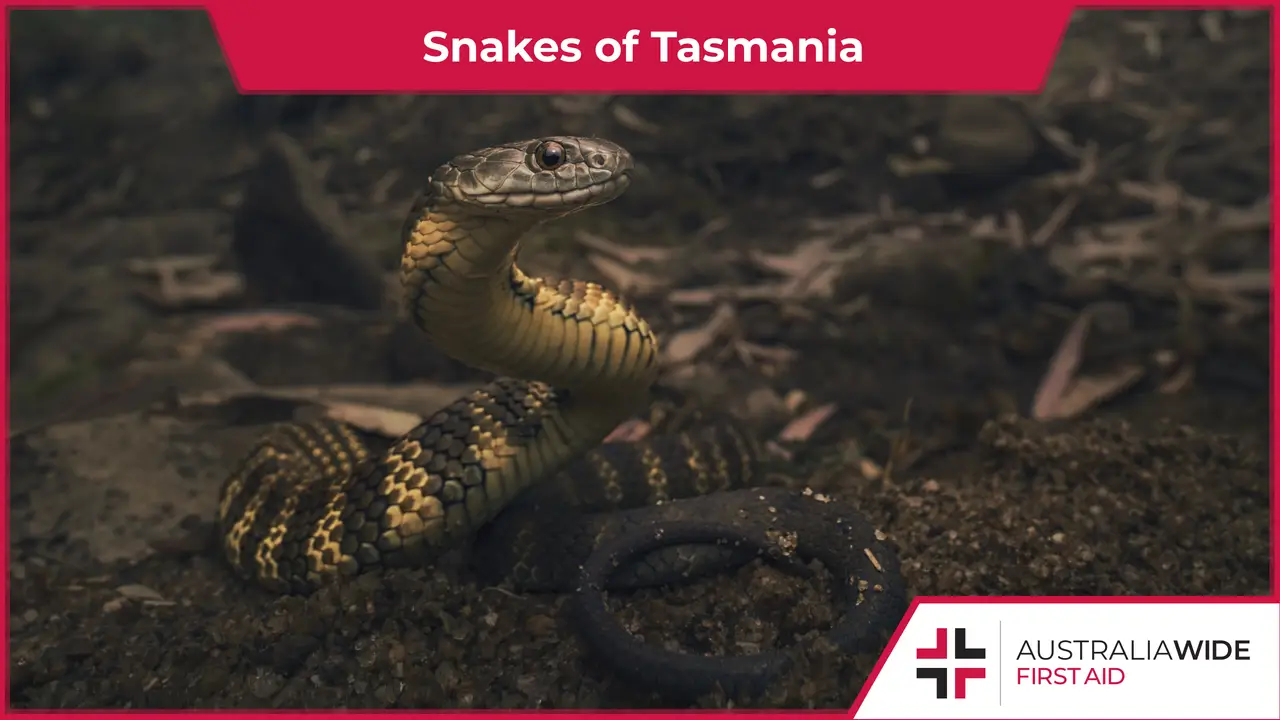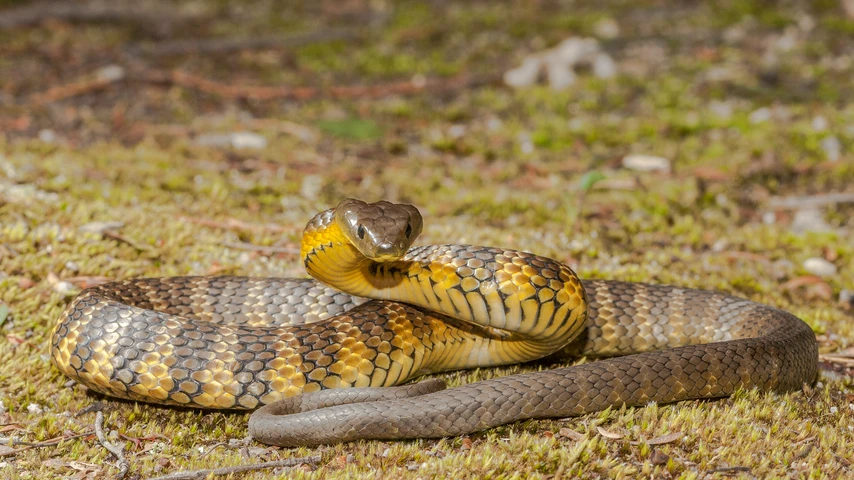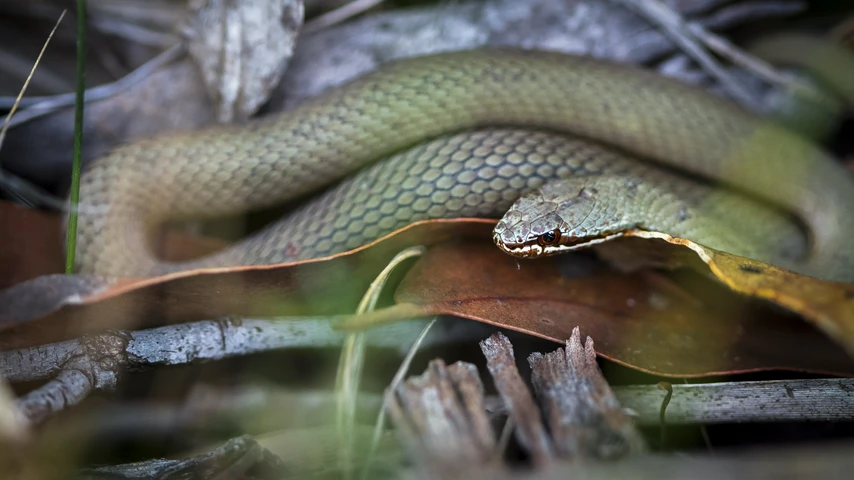First Aid for the Snakes of Tasmania


Tasmania is home to three snake species: the Tiger snake, the Lowland copperhead snake, and the White lipped snake.
These three snakes have dark colouration to absorb heat more efficiently in Tasmania's cold climate. Likewise, they have highly toxic venom that can adversely affect nerve cells, including those in the heart and lungs.
It is important to remember, however, that these snakes are unlikely to attack people except in the case of severe harassment.
In this article, we will help you stay snake bite-safe in Tasmania by providing information about:
We also cover snake bites in our general and childcare first aid courses. We have training locations in Tasmania and across the country - head to our website to enrol at a location near you today.

The Tiger snake (Notechis scutatus) commonly has the following identifying characteristics:
They often take shelter in or under fallen timber, matted vegetation, and disused animal burrows in or near the following habitats:

The Lowland copperhead snake (Austrelaps Superbus) is similar in form and colouration to other species of Copperhead and has the following identifying characteristics:
Lowland copperheads typically take shelter in disused animal burrows, dense vegetation, and under natural and man-made debris in or near the following habitats:

The White lipped snake (Drysdalia coronoides), which are also called Whip snakes in Tasmania, have the following identifying characteristics:
They are known to take shelter beneath rocks, logs, and other ground debris in or near the following habitats:
Snake bite venom is intended to numb, stun, or kill prey, so it can cause the following symptoms in humans:
It is important to note, it may take up to 2 hours for these symptoms to become apparent.
We run certified First Aid courses throughout all major Australia citys. Find a location near you.
It can be difficult to positively identify different snake species, as individuals of the same species can vary dramatically in colour, pattern, and size. As such, all snake bites should be treated as a medical emergency:
Check out our Resource Library for more information about avoiding snake bites.
Tasmania is home to three venomous species of snake: Tiger, Copperhead, and White lipped.
If you sustain a bite from any of these venomous snake species, contact Triple Zero (000) for an ambulance and apply the Pressure Immobilisation Technique.
You can enrol in one of our general or childcare first aid courses to learn more about snake bites. We have training locations in Tasmania and across the country - head to our website to find a location near you today.

March 11, 2025
Darwin, the tropical capital of Australia’s Northern Territory, is home to a rich diversity of wildlife - including an impressive array of spiders. From the sprawling webs of golden orb-weavers to the cryptic camouflage of trapdoor spiders, these arachnids play a vital role in the local ecosystem. While some may inspire fear, the majority are harmless and even beneficial, helping to control insect populations.

September 4, 2024
Cat bites, while often underestimated, can lead to serious health complications if not treated promptly and properly. Cats' mouths harbour a variety of bacteria that can cause infections in humans.

April 1, 2024
Encounters with wildlife can often be thrilling, but when it comes to the creature known as the drop bear, the experience can quickly turn dangerous. A sharp increase in recent attacks prompts the need for understanding proper first aid procedures in case of an attack.